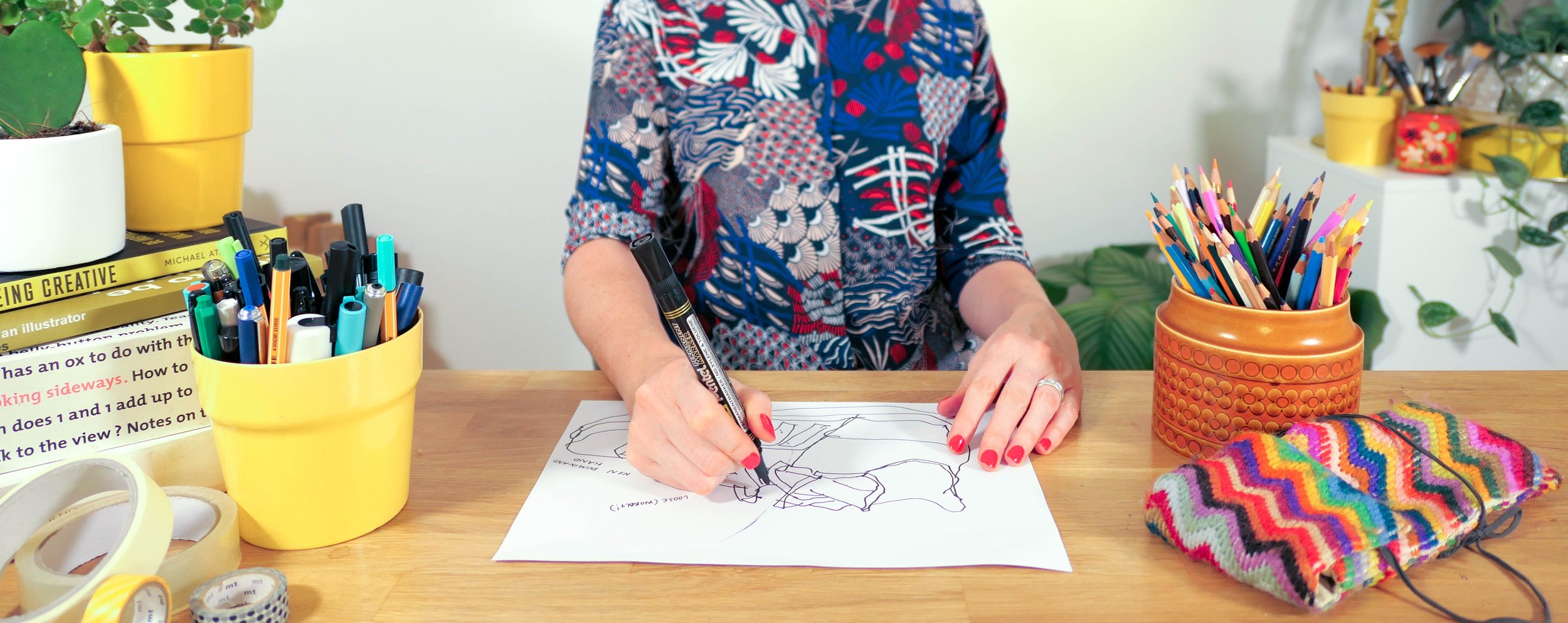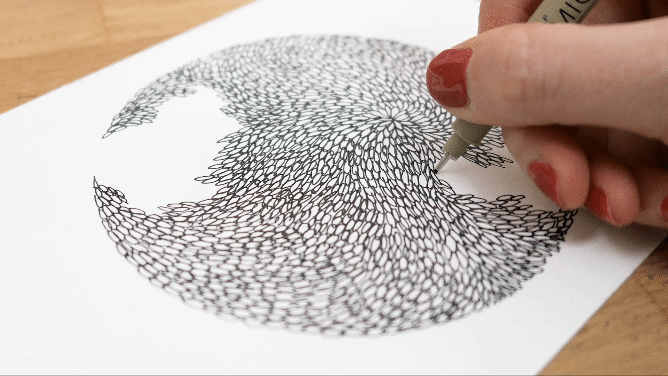The Beginner’s Guide to Mindful Drawing (Even If You Think You Can’t Draw)
“I can’t draw.”
If that phrase has ever slipped out of your mouth—or swirled around your brain—you’re not alone.
So many of us carry stories from childhood art classes or unkind comments that convinced us drawing ‘wasn’t for us.’
But here’s the truth: drawing can, and should, be for everyone.
We need to un-learn this idea that in order to draw, we need to be talented. This is a myth. Technical drawing skills are something which can be learned like any other skill, and Mindful drawing is something anyone can tap into, whether you have technical drawing skills or not.
Mindful drawing isn’t about being perfect. It’s about being present.
In this blog post, you’ll learn how mindful drawing invites you to slow down, quiet the noise and reconnect with your creative self—no ‘talent’ required.
Looking for an easy and accessible way to try Mindful Art-Making? My Coloring for Self-Care Workbook includes calming prompts and pages you can start with right away. Perfect for easing into mindful art (even if you’re feeling overwhelmed).
What Is Mindful Drawing?
Mindful drawing is about being present with the process of making marks - not creating a masterpiece. It’s the gentle meeting point between creativity and presence. It’s not about technique or talent - it’s about slowing down, tuning in, and allowing the simple act of mark-making to anchor you in the present moment.
When you draw mindfully, you’re not trying to impress anyone (including yourself). You’re just noticing: the sound of your pen on paper, the rhythm of your breath, the way a line curves or wobbles. It’s a practice of awareness, and of noticing, and being truly present in the moment.
Think of it like meditation with a pencil.
You don’t need fancy supplies, a ton of time, or even to know what you’re drawing. In fact, some of the most nourishing mindful drawing moments happen when you’re doodling freely. Many people are surprised to discover that mindful drawing is less about what you draw and more about how you feel while drawing.
You might feel:
• Calmer and more grounded after just a few minutes
• A sense of creative playfulness
• A quiet pride in making time and showing up for yourself
It’s not about being “good at art.” It’s about letting art be good for you.
Why It’s Okay If You Think You “Can’t Draw”
First of all: you’re not alone.
So many people carry this belief—often planted somewhere in childhood—that they can’t draw. Maybe a teacher made an offhand comment. Maybe a classmate laughed at a wobbly cat sketch.
But here’s the truth:
It doesn’t matter if you can draw realistically. It matters that you show up.
This practice isn’t about proportions or perspective or whether your flower actually looks like a flower. It’s about using drawing as a tool to reconnect with yourself.
In fact, letting go of the need to be “good” can actually make your experience better. When the pressure is off, your creativity has space to stretch and breathe. You might discover you actually can draw—just not in the way you’ve been told you’re supposed to.
The lines don’t have to be straight.
The doodles don’t have to make sense.
Your page doesn’t need to be Instagram-worthy.
You are allowed to create just because it feels good—not because it looks perfect.
3 Gentle Mindful Drawing Techniques to Try Today
1. Mindful Coloring ✨ A soothing, accessible entry point
• Choose a coloring page you enjoy—abstract, botanical, or something simple.
• Select just a few colors you feel drawn to today.
• As you begin to color, slow everything down. Focus on the feeling of your pencil or pen gliding across the paper.
• Notice your breath. Notice how the color fills the space. Let go of perfection.
Want a gentle guide to get started?
My Coloring for Self-Care Workbook includes 5 beautiful abstract pages, mindfulness tips, and simple techniques to help you slow down and reconnect through art.
2. Slow, Repetitive Mark-Making ✨ For when your thoughts feel tangled
Pick a single simple shape - for example dots, spirals, tiny circles, lines.
Begin gently filling your page with that one mark, over and over.
Move slowly and with intention.
TIP: As you repeat the mark, count each one as you draw it - this can be a helpful little hack to keep your brain present and engaged with the drawing and stop it from wandering off!
3. Breath and Brush ✨ Connect your breath to your art
Take a deep inhale.
As you exhale, make one mark—just one—with your brush, pencil, or pen.
Inhale again. Exhale. Make another.
Continue this for 1–2 minutes, syncing your breath with each gentle mark.
Ready to Go Deeper?
If you’ve tried even one of the practices above, you’ve already taken a step toward reconnecting with your creativity—gently, mindfully, and on your own terms.
But sometimes we need a little structure… a little rhythm… a little encouragement to keep going. That’s exactly what you’ll find inside my course:
Drawing Patterns: 14 Days of Mindful Drawing for Self-Care. In just a few minutes a day, you’ll learn how to use simple patterns and doodling as a calming, creative practice to soothe your nervous system and create space for yourself - even if you have absolutely no drawing experience.
Each lesson is bite-sized, beginner-friendly, and designed to help you unwind, reset, and rediscover joy in the simplest of marks.
“I used to draw all of the time as a teenager but stopped in my late teens - this is the first time I’ve tried to restart my creative practice as an adult. Mel’s class was the non-threatening guidance that I needed. The prompts are structured but also offer freedom for independent ideas. At the beginning of the 14 days, I stuck with the examples but became more confident to try out my own ideas as the two weeks progressed.”
And if you’d like more gentle guidance, inspiration, and creative prompts like this, I’d love to welcome you to my monthly newsletter - a cozy place for mindful creatives who want to nurture their art and their well-being.





